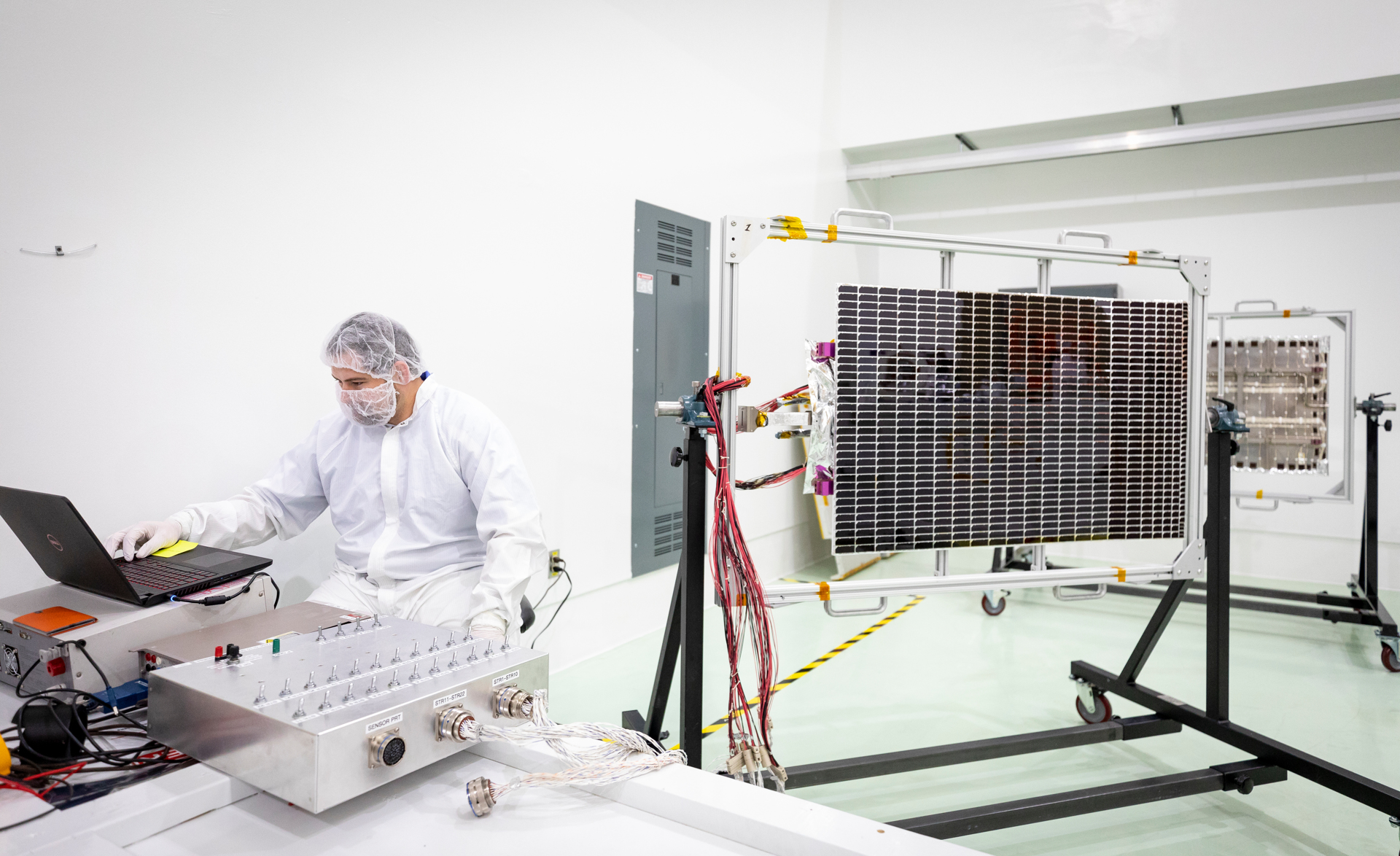Solar Power: Parker Solar Probe Tests Its Arrays
Posted on 2018-05-07 12:03:00
Andrew Gerger of the Johns Hopkins Applied Physics Laboratory and Rick Stall of Newforge Technologies check and adjust a purple laser using a replica of a solar array wing on May 3, 2018. Later, when the solar arrays are attached to the spacecraft, the laser will be used to illuminate each string of cells on the array to confirm the string is connected and will provide power to the spacecraft.
Credit: NASA/Johns Hopkins APL/Ed Whitman
High-Res Image
Andrew Gerger of the Johns Hopkins Applied Physics Laboratory inspects one of NASA’s Parker Solar Probe’s two solar panels by passing current through the array, which causes it to glow red and allows him to examine each individual solar cell. The testing occurred on May 2, 2018, at Astrotech Space Operations in Titusville, Florida.
Credit: NASA/Johns Hopkins APL/Ed Whitman
High-Res Image
Andrew Gerger, an engineer from the Johns Hopkins Applied Physics Laboratory, prepares to conduct an inspection of one of the solar arrays from NASA’s Parker Solar Probe on May 2, 2018, at Astrotech Space Operations in Titusville, Florida.
Credit: NASA/Johns Hopkins APL/Ed Whitman
High-Res Image
NASA’s Parker Solar Probe is powered by two solar arrays, shown here on May 2, 2018, at Astrotech Space Operations in Titusville, Florida.
Credit: NASA/Johns Hopkins APL/Ed Whitman
High-Res Image